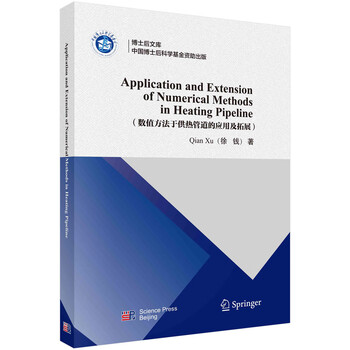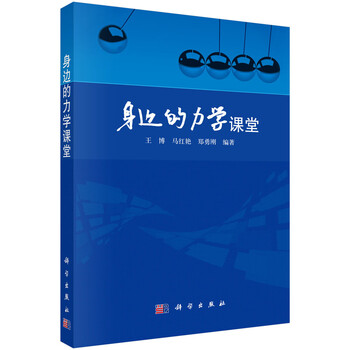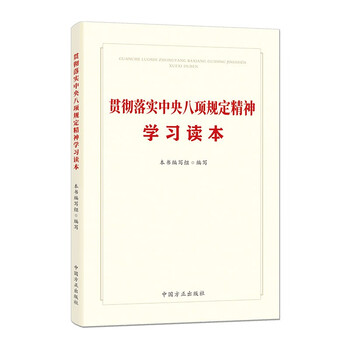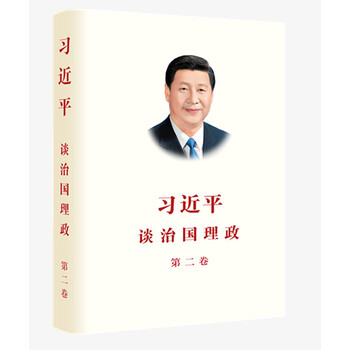内容简介
《Application and Extension of Numerical Methods in Heating Pipeline(数值方法于供热管道的应用及拓展)》建立一套从管道理论到传统供热管道应用再到创新拓展的完整的逻辑体系。主要包含理论基础和案例研究两个部分共四个篇章,开篇讲述了区域集中供热的基础概念、相关标准、发展历程、面临问题及未来的发展趋势。紧接着理论基础部分针对区域供热管网的基本特征安装及敷设方式做了介绍。案例研究分为三个篇章,其中第二篇章对不同结构的供热管道从安全性及经济性两方面着手进行了详细的数值研究;第三篇章在供热管道的基础上转向能源输运管道,输运介质从原来的热水、热蒸汽转向了石油天然气;*后第四篇章将传统供热刚性管道数值研究技术革新并成功应用到了生物弹性血管的研究方面,利用工学的数值模拟技术解决医学临床问题。
精彩书摘
Chapter 1
District Heating
1.1 District Heating Systems
1.1.1 Overview of District Heating Systems
The district heating system refers to the hot water system in the thermal power plant, regional boiler room or heat exchange station after the central heating of water, the heat in the state of hot water or steam through the municipal heating network to various buildings, residential areas, urban neighbourhoods or entire industrial enterprises. If the water quality of the urban heat network meets the water requirements, the water can also be directly drawn from the heat network when the conditions of the heat network permit. As shown in Fig. 1.1, the regional hot water supply system is suitable for cities and industrial enterprises with concentrated building layout and large hot water consumption, and is widely used in foreign countries, especially in developed countries. The district heating system mainly consists of four parts: heat source, heating network, user and heat exchange station.
The heat source is responsible for the preparation of hot media (hot water, hot steam), such as thermal power plants, central boiler rooms, low-temperature nuclear energy heating stations, heat pumps, geothermal, industrial waste heat, waste incinerators, etc. In recent years, with the introduction of low-carbon targets, renewable energy sources such as solar energy have also been used as heat sources to provide heat for hot water and steam. The heat source distribution should be as concentrated and reasonable as possible, and the heat source equipment should be selected as far as possible with high parameters, large capacity and high efficiency. The location of the heat source should be located in the heat load centre as far as possible, and according to fuel transportation, heating pipe network and power transmission line, water source, ash removal, terrain, geology, hydrology, environmental protection, comprehensive utilization and other factors, through technical and economic comparison. The central heating source, heating pipe network and thermal user facilities should be unified planning, overall arrangement and synchronous construction, and the economic and social benefits of central heating should be brought into playas soon as possible.
Fig. 1.1 District heating system
The heating pipe network is mainly responsible for the transmission and distribution of hot water and hot steam, which is composed of the pipeline system and accessories between the heat source and the heat station and the heat station and the user and is a bridge connecting the heat source and the heat user.
The heat exchange station is a place where heat is concentrated and exchanged, just like a transformer, the high temperature hot water or steam heat transfer from the primary network to the hot water of the secondary network and then supply the user. According to the form of heating, direct supply station and intermediate supply station are divided, the former is the direct supply of power plant to users, high temperature, difficult to control, lowefficiency. The heat exchange station is the product of welfare heating ofwaste heat in the initial power plant. For the inter-supply station, the power plant is a primary pipe network, the community is a secondary pipe network, and the heat source (power plant) heat network (primary and secondary pipe network) heat user (residential building and unit) connection is a thermal station. Equipment: plate heat exchanger, circulating pump, a secondary line decontamination device, water pump, water tank, metering meter, control valve and so on.
Thermal user refers to the place where heat is consumed. It includes a thermal user system composed of indoor heating, domestic hot water and production thermal systems.
1.1.2 Development of District Heating System
目录
Contents
1 District Heating 1
1.1 District Heating Systems 1
1.1.1 Overview of District Heating Systems 1
1.1.2 Development of District Heating System 2
1.1.3 Industry Standard of District Heating System Pipe Network 8
1.1.4 Problems of District Heating System Pipe Network 13
1.1.5 Future Development of District Heating Systems 25
References 28
2 Basic Characteristics of Heating Pipeline Network System 31
2.1 Heating Pipeline Network 31
2.1.1 Prefabricated Insulation Pipe Structure 31
2.1.2 SoilMass 36
2.2 Long-Distance Transmission and Supply Pipe Network System LayingMethod 40
2.2.1 Laying on the Ground 41
2.2.2 Underground Laying 43
2.3 Installation of Heating Pipeline Network 47
2.3.1 Installation Components of Heating Pipeline Network 47
2.3.2 Layout of Heating Pipeline Network 50
2.3.3 Installation Method of Heating Pipelines 54
References 55
3 Basic Theory of Long Distance Pipeline 57
3.1 Basic Theory of Fluid Solid Thermal Coupling 58
3.1.1 Development of Fluid Structure Thermal Coupling Cooperation 58
3.1.2 Definition and Classification of Fluid Solid Thermal Coupling 60
3.1.3 Fluid–Solid–Thermal Coupling Calculation Theory 66
3.1.4 Research Methods for Fluid Solid Thermal Coupling 74
3.1.5 Theoretical Analysis of Multi Field Coupling 78
References 81
4 Theory of Elastoplasty and Economic Evaluation for Directly Buried Insulated Pipeline Systems 83
4.1 Development of Pipeline Elastoplasticity 83
4.2 Elastoplastic Definition and Classification of Pipeline 85
4.2.1 Elastoplastic Definition and Characteristics of Pipeline 85
4.2.2 Elastoplastic Classification of Pipelines 87
4.3 Pipeline Elastic–Plastic Calculation Theory 89
4.3.1 Calculation Theory of Elasticity 89
4.3.2 Calculation Theory of Plastic Mechanics 92
4.3.3 Definition and Classification of Pipeline Heat Loss 93
4.3.4 Theoretical Calculation of Heat Loss 94
4.4 Economic Evaluation of Pipe Network Operation 102
4.4.1 Economic Evaluation Theory 102
References 104
5 Case Study on Fluid–Solid Thermal Coupling in Heating Pipelines 107
5.1 Effects of the Temperature and Pressure Loads Coupled on Structure Stress of “L”-Type Large-Diameter Buried Pipe Network 108
5.1.1 Overview 108
5.1.2 Numerical Model 109
5.1.3 Results and Analysis 111
5.1.4 Conclusion 119
References 121
6 Effects of End to Side Displacement Load on Structure Stress and Deformation of “L”-Type Large-Diameter Buried Pipe Network 123
6.1 Overview 123
6.2 Numerical Model 124
6.3 Results and Analysis 125
6.3.1 Equivalent Stress and Strain Distribution of Pipeline Network Under Equivalent Displacement Load 126
6.3.2 Effect of Equivalent End Displacement Release on Equivalent Stress and Deformation of Pipelines 127
6.3.3 Equivalent Stress and Deformation Distribution of Pipelines Under Non-Equivalent Displacement Loads 130
6.3.4 Effect of Unequivalent End Side Displacement Release on Equivalent Stress and Deformation of Pipelines 130
6.4 Conclusions 133
References 134
7 Analysis of Fluid–Solid–Thermal Performance of L-Shaped Pipeline System 135
7.1 Overview 135
7.2 Numerical Model 136
7.3 Results and Analysis 139
7.3.1 Comparison of Experimental Parameters 139
7.3.2 Analysis of Pressure and Temperature Fields in the Fluid Region 141
7.3.3 Deformation Distribution Performances of the Pipeline Under Different Loads and Laying Conditions 142
7.3.4 Influences of Different Loads on Maximum Deformation of Elbow 146
7.3.5 Influences of Coupling Action on Maximum Deformation of an Elbow 149
7.4 Conclusions 150
References 151
试读
Chapter 1
District Heating
1.1 District Heating Systems
1.1.1 Overview of District Heating Systems
The district heating system refers to the hot water system in the thermal power plant, regional boiler room or heat exchange station after the central heating of water, the heat in the state of hot water or steam through the municipal heating network to various buildings, residential areas, urban neighbourhoods or entire industrial enterprises. If the water quality of the urban heat network meets the water requirements, the water can also be directly drawn from the heat network when the conditions of the heat network permit. As shown in Fig. 1.1, the regional hot water supply system is suitable for cities and industrial enterprises with concentrated building layout and large hot water consumption, and is widely used in foreign countries, especially in developed countries. The district heating system mainly consists of four parts: heat source, heating network, user and heat exchange station.
The heat source is responsible for the preparation of hot media (hot water, hot steam), such as thermal power plants, central boiler rooms, low-temperature nuclear energy heating stations, heat pumps, geothermal, industrial waste heat, waste incinerators, etc. In recent years, with the introduction of low-carbon targets, renewable energy sources such as solar energy have also been used as heat sources to provide heat for hot water and steam. The heat source distribution should be as concentrated and reasonable as possible, and the heat source equipment should be selected as far as possible with high parameters, large capacity and high efficiency. The location of the heat source should be located in the heat load centre as far as possible, and according to fuel transportation, heating pipe network and power transmission line, water source, ash removal, terrain, geology, hydrology, environmental protection, comprehensive utilization and other factors, through technical and economic comparison. The central heating source, heating pipe network and thermal user facilities should be unified planning, overall arrangement and synchronous construction, and the economic and social benefits of central heating should be brought into playas soon as possible.
Fig. 1.1 District heating system
The heating pipe network is mainly responsible for the transmission and distribution of hot water and hot steam, which is composed of the pipeline system and accessories between the heat source and the heat station and the heat station and the user and is a bridge connecting the heat source and the heat user.
The heat exchange station is a place where heat is concentrated and exchanged, just like a transformer, the high temperature hot water or steam heat transfer from the primary network to the hot water of the secondary network and then supply the user. According to the form of heating, direct supply station and intermediate supply station are divided, the former is the direct supply of power plant to users, high temperature, difficult to control, lowefficiency. The heat exchange station is the product of welfare heating ofwaste heat in the initial power plant. For the inter-supply station, the power plant is a primary pipe network, the community is a secondary pipe network, and the heat source (power plant) heat network (primary and secondary pipe network) heat user (residential building and unit) connection is a thermal station. Equipment: plate heat exchanger, circulating pump, a secondary line decontamination device, water pump, water tank, metering meter, control valve and so on.
Thermal user refers to the place where heat is consumed. It includes a thermal user system composed of indoor heating, domestic hot water and production thermal systems.
1.1.2 Development of District Heating System













